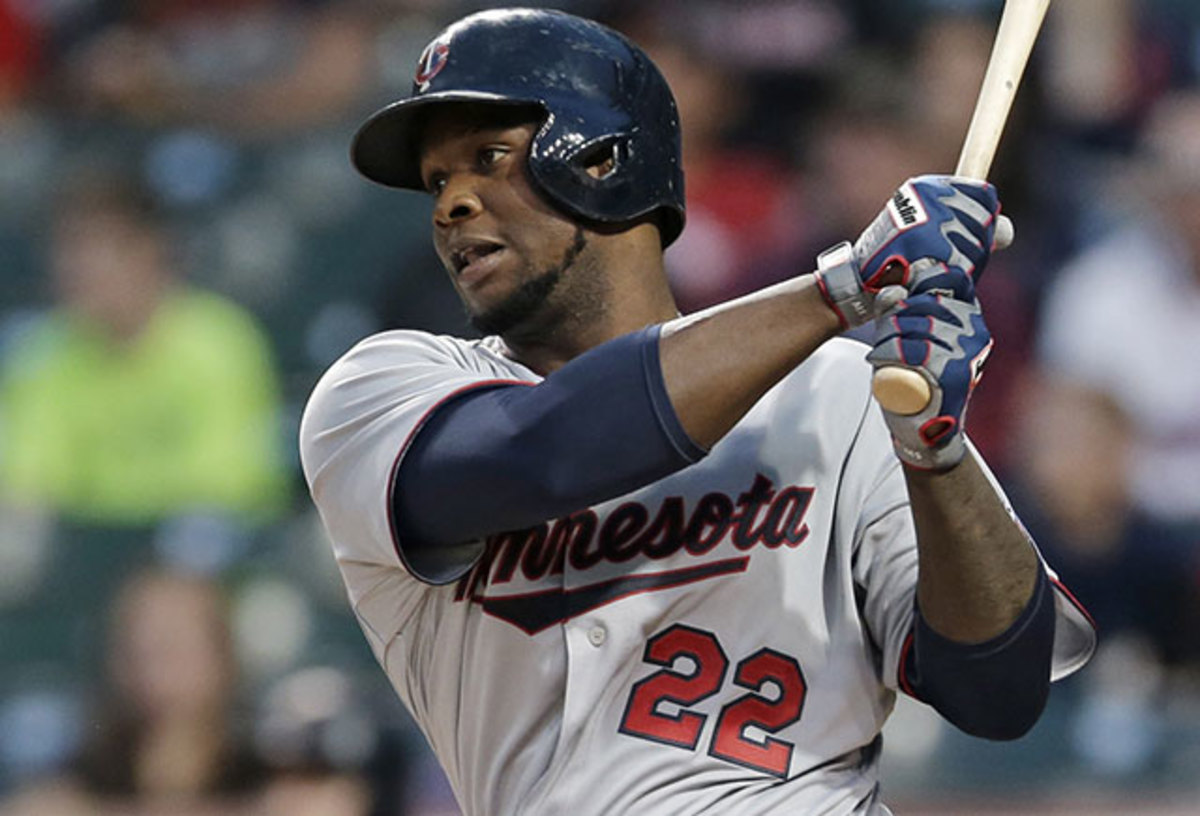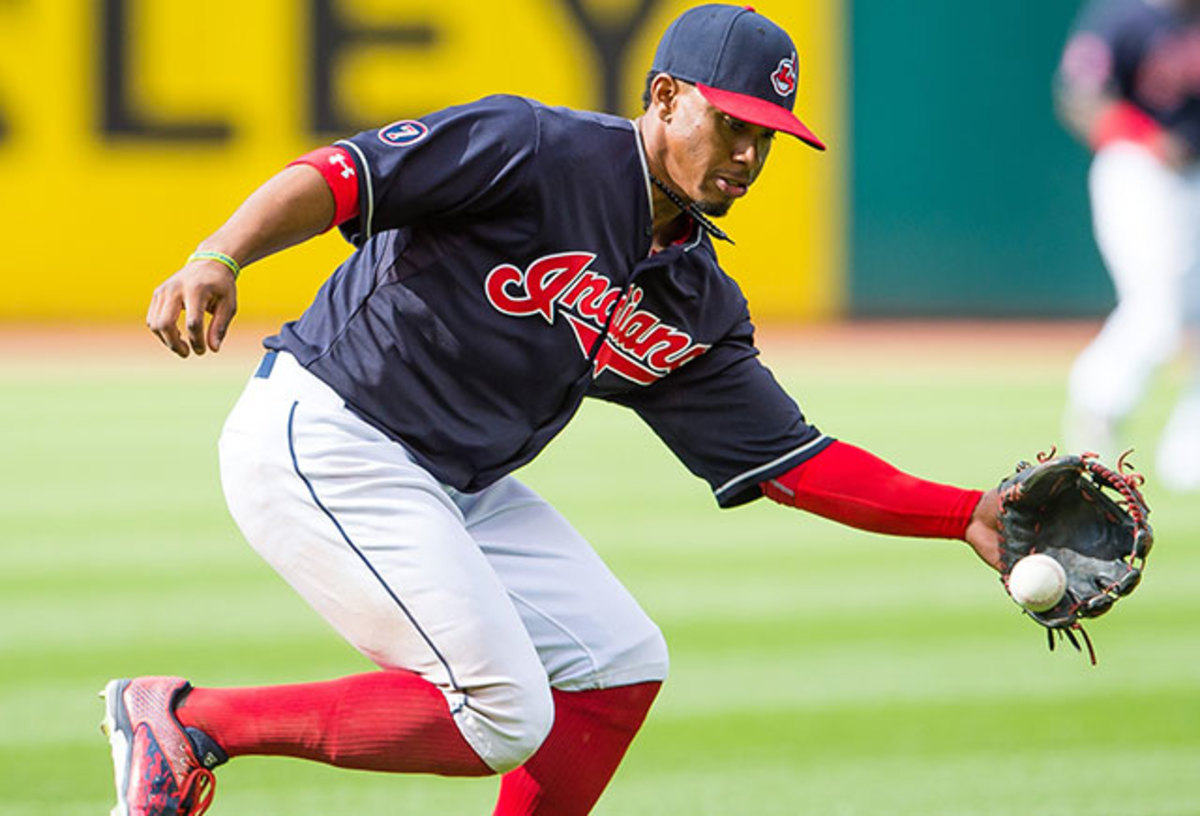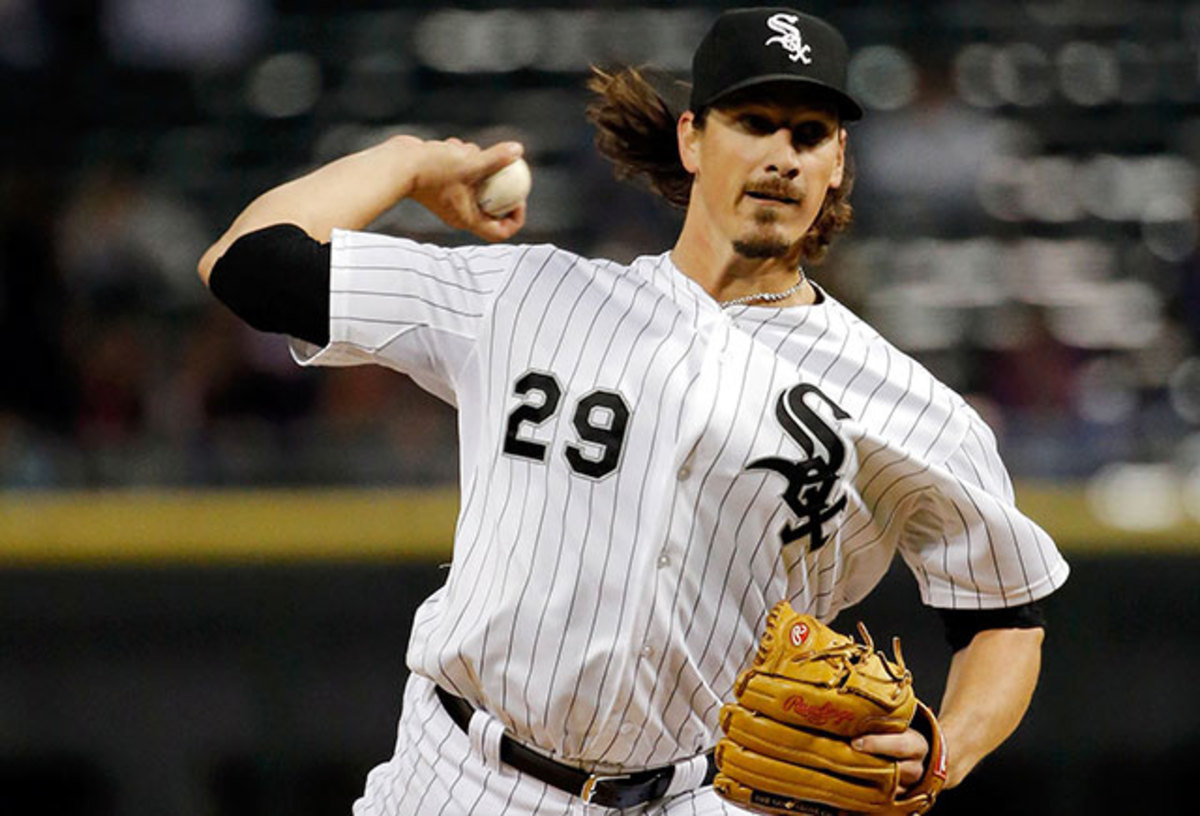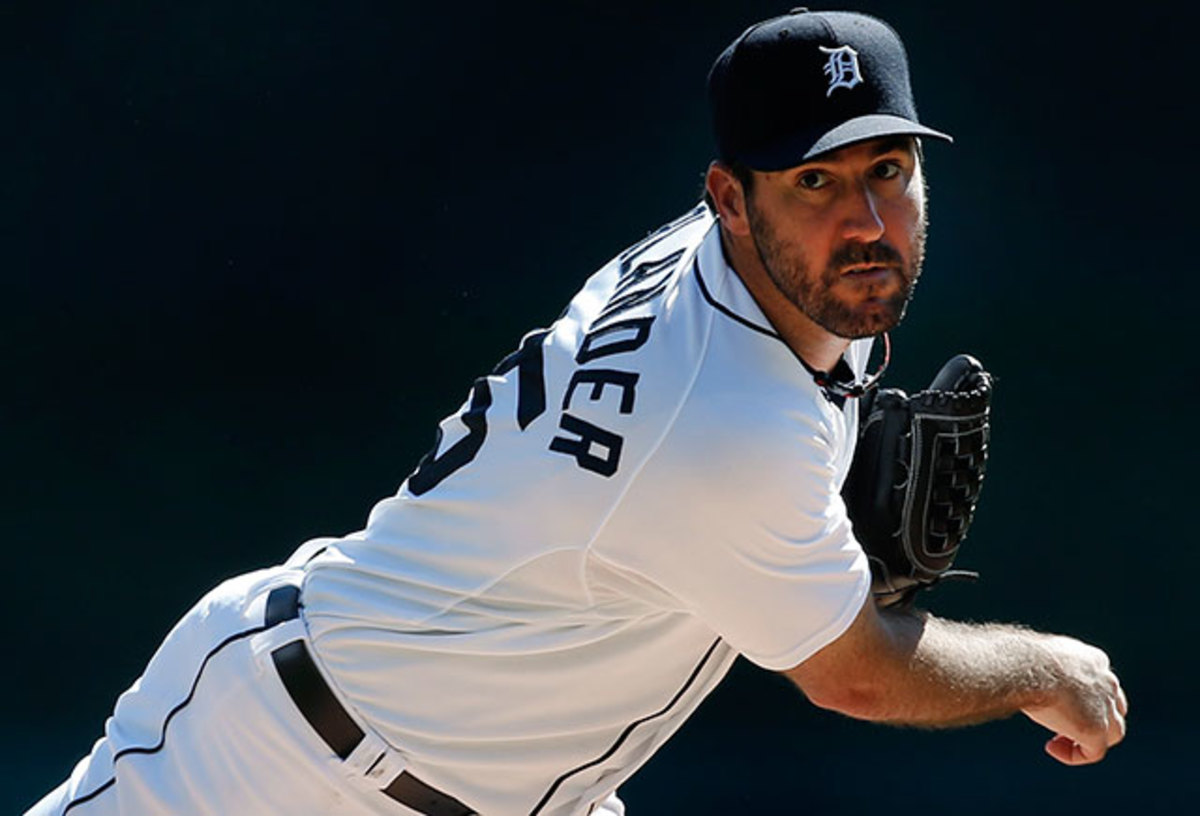AL Central Hot Stove Preview: Top free agents, targets for each team

This week, SI.com is breaking down the off-season plans for all 30 teams, including top free agents, targets and winter needs. Below is Cliff Corcoran's breakdown of the American League Central; you can find Jay Jaffe's take on the National League Central's off-season here. On Wednesday, Jaffe and Corcoran examined the AL and NL East teams, and they will wrap up their Hot Stove previews with the AL and NL West clubs on Monday.
Teams are presented in order of finish from 2015. Free agents are listed in order of Wins Above Replacement (baseball-reference.com version). Age is their 2016 playing age. The listed salaries and bWAR totals are those for their final 2015 team only. Players with undecided options for 2016 are listed with the free agents and denoted by an asterisk.
Kansas City Royals
Results: 95–67 (.586), won World Series
Pythagorean Record: 90–72 (.556)
Free Agents
player | position | age | salary | war |
|---|---|---|---|---|
LF | 32 | $14.0M | 2.8 | |
Chris Young | RHP | 37 | $1.675M | 2.5 |
Ryan Madson | RHP | 35 | $850K | 1.7 |
2B | 35 | $787K | 1.2 | |
Franklin Morales | LHP | 30 | $1.85M | 0.7 |
RHP | 30 | $2.825M | 0.2 | |
Yohan Pino | RHP | 32 | N/A | 0.2 |
RHP | 30 | N/A | -0.1 | |
Jonny Gomes | OF | 35 | $741K | -0.4 |
Alex Rios | RF | 35 | $9.5M | -1.1 |
RHP | 37 | $9.0M | -1.8 | |
TOTALS |
|
| $41.2M | 5.9 |
In the three days since we took a full-length look at the Royals’ off-season situation on Monday, the team has declined the 2016 options on Rios and Guthrie, and Gordon has declined his $12.5 million player option. Gomes’s $3 million club option also didn't get picked up, but the team may have interest in retaining him on a cheaper one-year deal. It’s also possible that Kansas City will try to convince him to retire and take a coaching position in the organization.
Targets: Corner OF; 2B; lots of pitching
Check out Monday's story for a more detailed look at the Royals' options, but here is the short version. In the outfield, there seems to be mutual interest in a reunion with Gordon, which would be ideal. In rightfield, a platoon of lefty-hitting Jarrod Dyson and righty Paulo Orlando would be an upgrade over Rios, and former first-round pick Reymond Fuentes could be another in-house option. The team probably can't afford to sign free-agent outfielder Jason Heyward, but Denard Span, Gerardo Parra and Will Venable are all cost-efficient options who would fit the Royals' playing style.
At second base, Omar Infante is under contract for two more years, and World Series hero Christian Colon, a former first-round pick, deserves more playing time. But Kansas City should prefer to bring back Zobrist, whose ability to get on base and play multiple positions fits nicely with the club's preferred philosophy. Zobrist could also be a solution in rightfield if the team decides it wants some combination of Infante and Colon at second over using Dyson, Orlando and Fuentes in right.
The pitching staff is more unsettled, with just 12 healthy arms on the current 40-man roster. Outside of the top three in the bullpen—Wade Davis, Kelvin Herrera and Luke Hochevar—the Royals’ relief corps needs serious reinforcements. That's especially true if Madson, Morales or Young leave in free agency, though the team seems likely to try to retain Madson and Young. Danny Duffy pitched well in relief during the postseason, but he may be needed in the rotation, as Cueto is likely to be too expensive for Kansas City to re-sign; a second-tier free-agent starter such as Yovani Gallardo, Scott Kazmir or Mike Leake would be a better fit financially. If Duffy does return to the rotation, the Royals need a lefty for the bullpen; Tony Sipp and Antonio Bastardo are the top free agent options there.
Bottom Line
The Royals will try to keep Gordon and Zobrist, and they’ll need to replace Rios as well. But their need for pitching reinforcements, both in the rotation and middle relief, is every bit as significant; their roster is simply understaffed as it stands.

Minnesota Twins
Results: 83–79 (.512)
Pythagorean Record: 81–81 (.500)
Free Agents
player | position | age | salary | war |
|---|---|---|---|---|
Mike Pelfrey | RHP | 32 | $5.5M | 1.4 |
Blaine Boyer | RHP | 34 | $850K | 1.3 |
Brian Duensing | LHP | 33 | $2.7M | 0.2 |
Neal Cotts | LHP | 36 | $722K | -0.1 |
OF | 40 | $10.5M | -0.8 | |
TOTALS |
|
| $20.3M | 2.0 |
Hunter has retired, and there’s no particular reason for the Twins to want to re-sign any of those aging relievers or to make room for Pelfrey in their rotation. That salary relief can be better spent elsewhere.
Targets: Trade partners, pitching, catching
The Twins' celebrated farm system began to bear fruit in 2015, helping to turn a fluky May into season-long contention. Most significantly, 22-year-old slugger Miguel Sano emerged as a fearsome hitter in the second half after losing all of 2014 to Tommy John surgery, but he was largely relegated to designated hitter duty beause of the presence of 29-year-old Trevor Plouffe at third base. Plouffe made $4.8 million last year and he is due for another raise via arbitration after a season in which he hit 22 homers and drove in 86 runs; heading into his walk year, he would seem to be an ideal candidate to be traded for pitching help.
AL East Hot Stove Preview: Top free agents, targets for each team
The big question Minnesota has to ask itself this off-season is whether or not it wants to make a big push now or give its kids another year to develop. The latter track could include letting Sano get comfortable at third base, giving elite centerfield prospect Byron Buxton—who struggled at the plate in his first major league opportunities this past season—time to adjust to major league pitching (or even a bit more time to ripen at Triple A) and trying 22-year-old righty Jose Berrios in the rotation. It would also mean giving Kennys Vargas another chance to nail down the DH job vacated by Sano and further determining what the team has in outfielders Oswaldo Arcia, Aaron Hicks and Eddie Rosario; shortstops Eduardo Escobar, Jorge Polanco and Danny Santana; and righthanded starter Tyler Duffey.
If the Twins do make a push, they need to focus on their pitching staff, specifically the rotation. Minnesota’s starting five may be technically set with Ervin Santana, Phil Hughes, Kyle Gibson, Duffey and some combination of Tommy Milone and big-money bust Ricky Nolasco, but that is not a contending rotation. Of course, the Twins have already thrown a lot of money at improving in that area, committing a total of $170 million to Nolasco, Hughes and Santana over the last two off-seasons. Given that, they may be limited to trading for any further pitching help, which again makes dealing Plouffe an attractive option.
None of the above precludes them from admitting the mistake they made in extending catcher Kurt Suzuki and looking to the free-agent market for a one-year deal for another backstop. Some have floated the idea of bringing back A.J. Pierzynski to fill the “I was here when we won a lot” veteran-presence role vacated by Hunter. Despite paying Hunter more than $10 million for a sub-replacement-level performance, Minnesota was reportedly very disappointed when he retired, which probably tells you more about the team's decision making than it does about Hunter.
Bottom Line
The Twins are hoping to follow in the footsteps of the Royals, Cubs and Astros in turning a heralded farm system into a serious major league contender, but they need to be careful not to overreact to what was basically a .500 season by rushing the process. A few smart trades could help balance their roster with pitching talent, but given their recent track record, handing out a big pitching contract seems unwise.

Cleveland Indians
Results: 81–80 (.503)
Pythagorean Record: 84–77 (.522)
Free Agents
player | position | age | salary | war |
|---|---|---|---|---|
Ryan Raburn | OF | 35 | $2.5M | 1.0 |
Ryan Webb | RHP | 30 | N/A | 0.6 |
Gavin Floyd | RHP | 33 | $4.0M | 0.2 |
IF/OF | 35 | $3.5M | -1.3 | |
TOTALS |
|
| $10.0M | 0.5 |
There’s not much to see here. Raburn has had some small-sample success in Cleveland, but he is unreliable from year to year and will be 35 next April. Webb salvaged his career this past season but is fairly generic as far as righthanded relievers go. Floyd has thrown just 92 major league innings over the last three seasons due to various arm injuries. Aviles has hit .246/.280/.357 (74 OPS+) over the last four seasons and, like Raburn, is reaching the tail end of his career.
Targets: CF, 3B, 1B/DH
Biggest off-season storylines to watch: Free agency, HOF votes, more
When 2015 began, Cleveland was a team built around a strong young starting rotation that was undermined by terrible team defense. As the season progressed, the club improved its glove work by installing prospects Francisco Lindor at shortstop and Giovanny Urshela at third base and discovering that displaced third baseman Lonnie Chisenhall was a fantastic rightfielder. Of those three, however, only Lindor hit, and, in combination with a down year from Carlos Santana and an even worse one from Yan Gomes, the team remained unbalanced. There’s hope for improvement at the plate from all of those players, but Urshela has limited offensive upside, and the team still has big holes in centerfield and at designated hitter. The latter could be filled by Santana, who is entering the final guaranteed year of his contract, if the team acquires a superior first baseman.
Ironically, Cleveland may be the team that would match up best with the Twins in a Plouffe trade. They have pitching to spare, hold hopes (however modest) of contention and would benefit from a one-year patch at third base, giving Urshela time to work on his hitting in Triple A. Unfortunately, the fact that the two teams share a division and those aforementioned modest hopes of contention makes such a deal unlikely.
It is far more likely that Cleveland will reach into the free-agent market for an upgrade in centerfield, choosing from among Colby Rasmus, Dexter Fowler, Denard Span and Austin Jackson, all of whom could likely be had on a short-enough contract to allow top prospect Tyler Naquin to ascend to the position in the coming seasons. Beyond that, the club's biggest need is a middle-of-the-order bat that it can stash at first base or DH. It need not break the bank there: Mike Napoli, another fine defender, would fit the bill nicely at first base, as might Daniel Murphy, who is overextended at second base.
Bottom Line
Cleveland won’t be in the mix for the top free agents, but it would benefit from signing a pair of second-tier bats to fill-in centerfield and first base, and its pitching depth makes it a team that is sure to spend most of the off-season fielding trade inquiries. One or two of those calls may result in a match, eliminating the need for one of those free-agent bats.

Chicago White Sox
Results: 76–86 (.469)
Pythagorean Record: 72–90 (.444)
Free Agents
player | position | age | salary | war |
|---|---|---|---|---|
RHP | 33 | $1.5M | 1.4 | |
Alexei Ramirez | SS | 34 | $10.0M | 1.0 |
Geovany Soto | C | 33 | $1.5M | 1.0 |
IF | 29 | $2.0M | 0.7 | |
RHP | 31 | $9.8M | 0.2 | |
TOTALS |
|
| $24.8M | 4.3 |
The White Sox declined Ramirez’s $10 million option on Wednesday, but that doesn't mean they don't want him back, only that they believe he can be signed for less. Soto was one of the better backup catchers in the league and would be worth retaining, but former first-round pick Beckham is unlikely to be anything more than a slick-fielding futility infielder.
As for the pitchers, Albers wasn’t as good as his fluky 1.21 ERA, nor was Samardzija as bad as his 4.96 mark. Still, there would seem to be little reason for Chicago to attempt to re-sign either, though Samardzija is likely to receive a qualifying offer (and almost guaranteed to reject it).
Targets: Bats, starting pitching
The White Sox made a surprising splash last winter, trading for Samardzija and committing $105 million to closer David Robertson, outfielder Melky Cabrera and first baseman Adam LaRoche. They then aggressively promoted the third pick in the 2014 draft, lefthander Carlos Rodon, who made his major league debut in late April. The result was a mere three-win improvement over their 2014 record, a below-average pitching staff and the third-fewest runs scored in the majors.
Chicago seems more likely to lick its wounds than to go big again this winter. Whatever moves the club does make, however, should be focused on adding offense, particularly in the infield.
Strike Zone podcast: Wrapping up World Series and Royals' unlikely title
In truth, outside of first baseman Jose Abreu (who could be pushed to designated hitter) and centerfielder Adam Eaton, the White Sox wouldn’t have to work too hard to improve on the production they received from their lineup this season. For example, Asdrubal Cabrera might be a viable stop-gap until shortstop prospect Tim Anderson is ready to take over the position, which could happen as soon as the end of 2016. A reunion with free-agent Juan Uribe could upgrade third base, and Stephen Drew, another free agent, would actually be an improvement at second base over glove-only prospect Carlos Sanchez. None of those players is likely to demand more than a one-year deal or a seven-figure salary (they made a combined $19 million this past season, and Drew and Uribe are likely to take pay cuts this winter). Those players would also add enough offense that if Cabrera and LaRoche rebound and Avisail Garcia (who will be arbitration-eligible for the first time this winter) starts to fulfill his fading promise, the lineup will at least be respectable.
The White Sox could also use a viable fifth starter and an upgrade over John Danks in the fourth spot; Danks, who is finally entering the last year of his contract, is due $14.25 million, but that’s a sunk cost at this point. In-house alternatives Erik Johnson, Chris Beck and Frankie Montas have failed to establish themselves in the majors, with Beck losing the second half of last season to an elbow injury. But again, if the team makes a move at all to shore up the rotation, it seems unlikely to be a big one.
Bottom Line
Going big last winter didn’t make the White Sox a better team in 2015, so they seem unlikely to double down this off-season. Their offense was so bad this past season, however, that it would take little effort or expense to improve it, particularly in the infield.

Detroit Tigers
Results: 74–87 (.460)
Pythagorean Record: 69–92 (.429)
Free Agents
player | position | age | salary | war |
|---|---|---|---|---|
OF | 35 | $5.0M | 1.6 | |
Josh Wilson | IF | 35 | N/A | 0.1 |
RHP | 41 | $10.0M | 0.0 | |
C | 29 | $5.4M | -0.1 | |
Alfredo Simon | RHP | 35 | $5.55M | -0.7 |
Tom Gorzelanny | LHP | 33 | $1.05M | -0.7 |
Randy Wolf | LHP | 39 | $198K | -0.8 |
TOTALS |
|
| $27.2M | -0.6 |
The above list is almost entirely dead weight. Davis was a solid righthanded compliment to Anthony Gose in centerfield, but the rest did more harm than good. Of the notable veterans, Avila lost the catching job to James McCann in season, and Nathan, who had his second Tommy John surgery in April, had his $10 million option declined on Tuesday.
Targets: Pitching, OF
The Tigers followed four straight division titles with a last-place finish in 2015, losing 15 more games than they did the previous year and posting their worst record since '08. The primary reason was the collapse of their pitching staff: Only the Rockies and Phillies allowed more runs than Detroit, which over the last two seasons bid farewell to Doug Fister, Max Scherzer, Rick Porcello, David Price, Drew Smyly, Joaquin Benoit, Joakim Soria and Nathan’s ulnar collateral ligament while enduring Justin Verlander’s decline and a variety of injuries to Anibal Sanchez. Former GM Dave Dombrowski gave the Tigers a couple of nice parting gifts in acquiring pitching prospects Daniel Norris and Michael Fulmer at the trade deadline in separate deals for Price and Yoenis Cespedes, but better management of the pitching staff during his final seasons in Detroit would have been preferable.
This is now new GM Al Avila’s mess to clean up. Verlander and Sanchez are locked in place by their contracts, and Norris, who is recovering from thyroid cancer, will be given every opportunity to join them in the rotation. But Fulmer is unlikely to make a contribution until 2017, and Tigers fans don’t need to see much more of Matt Boyd, Buck Farmer, Shane Greene or Kyle Lobstein. Avila’s primary task this winter is going to be to take the money the team didn’t spend on Scherzer or Price and give it to a legitimate ace, the likes of which Detroit no longer has. That could mean a reunion with Price or an attempt to sign Cueto, Zack Greinke or Jordan Zimmermann, but anyone beyond those four will be a disappointment.
Fearless and indomitable Royals construct a lasting title legacy
Then there’s the bullpen, which has been a running concern for years. Avila can practically start from scratch there, though maybe it’s more appropriate to say that he has to. Righties Alex Wilson and Blaine Hardy, both of whom are heading into their age-29 seasons, are the only relievers who inspire much optimism going forward, and neither is a particularly suitable closer candidate. Unfortunately for Avila, building a bullpen out of veteran free agents is a fool’s game. The best options are Soria, sidearmer Darren O'Day and lefty Sipp. Making a big commitment to Tyler Clippard, given the mileage on his arm and his struggles down the stretch this past season for the Mets, seems unwise. Madson comes with his own concerns, having had one healthy season since 2011 and proving homer prone in the playoffs. Trevor Cahill and Fernando Rodney both pitched well for the Cubs down the stretch, but both are also huge gambles going forward because of their inconsistency. Perhaps if the Tigers land the starters they need, they can attempt to spin straw into gold by moving Greene and company into the bullpen in the hope that one of them can emerge as a top-flight reliever.
As for its position players, Detroit could use a leftfielder and a righthanded platoon partner for Gose in center. Bringing back Austin Jackson, whose stock seems to have dropped considerably since he was traded in 2014, could work for the latter. How big the Tigers go in left will likely depend on how successful they are in spending their money on the rotation.
Bottom Line
What Detroit needs (a complete overhaul of the pitching staff plus two outfielders) and what it can afford are likely two different things. Still, there is no way the Tigers are going to climb back into contention without making a significant impact on the free-agent market. Signing two starting pitchers, even if both are second-tier, and overhauling their bullpen are musts. Filling in the outfield won’t matter unless the pitching issues are properly addressed.
